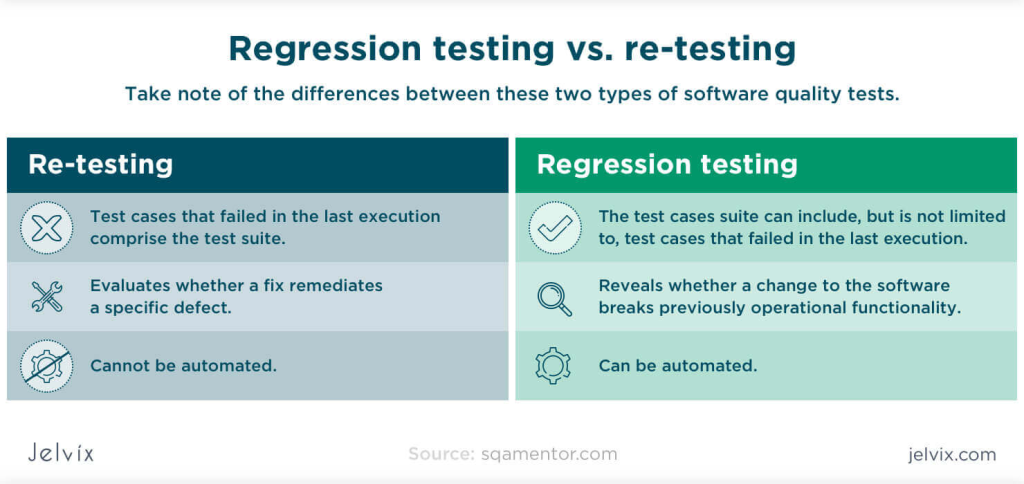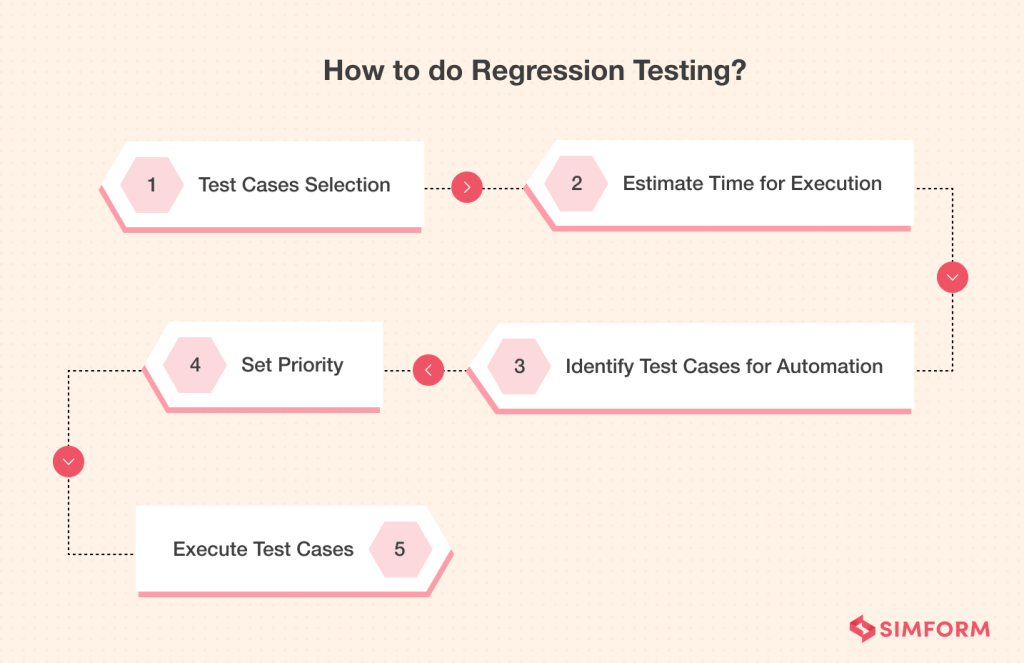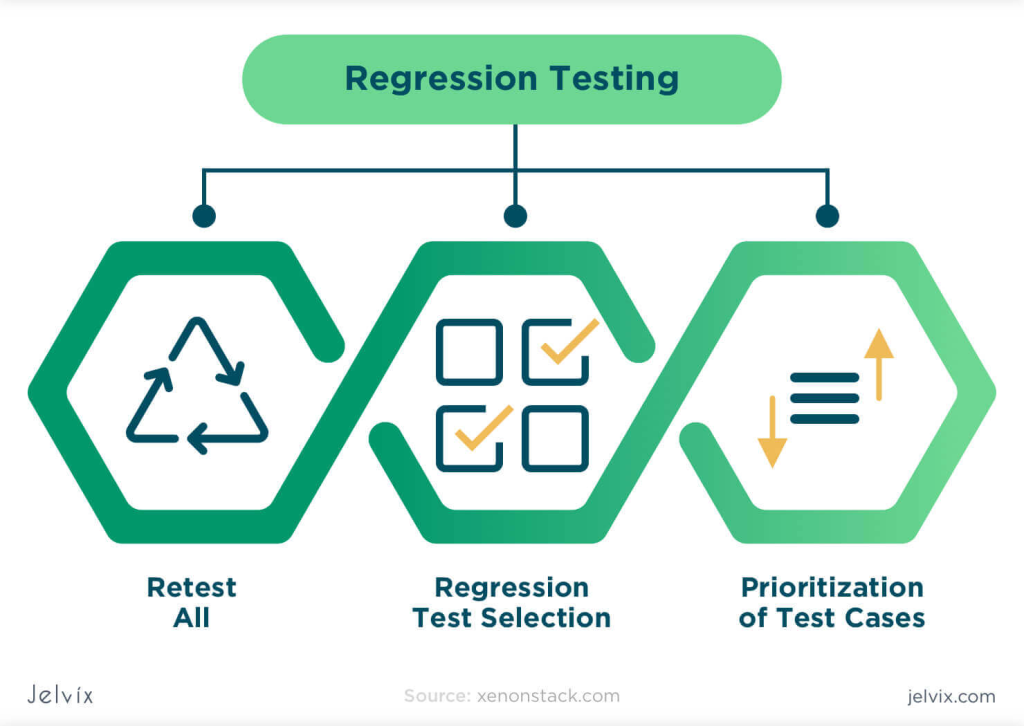Regression Testing: Why is It Necessary for Your Software?
As the world of software development changes constantly, new technologies continually emerge, and different variations of established technologies diverge from one another. This means that several parts of your application that otherwise would have been fine could potentially be broken by minor alterations . This phenomenon is known as regression, which describes the introduction of faults back into software after it has been altered—either unintentionally or via a conscious decision to introduce new functionality.
For this reason, regression testing is now one of the driving factors behind the success or failure of software development projects since it helps to ensure your software works as designed, regardless of the changes you may have made. In this article, we’ll learn the basics of this type of testing together with the SE Ranking team, who develop SaaS SEO platform and use regression tests as a part of their development routine.
What Is Regression Testing?
- Regression testing is an approach for verifying whether a software system’s new and modified parts still work as expected after being changed.
Regression testing is done to check for bugs and to see if a recent change has broken the existing code. The test should be run in the same manner as the previous baseline test. The aim of regression testing is to make sure that the rest of the software’s behavior is not affected while the code is being modified.
- For example, if a feature that allows users to log in has been changed, you would have to take a test that accounts for every possible outcome of logging in as a different user: with an incorrect password and a correct password.
How Does Regression Testing Work?
The working mechanism of the regression test includes several techniques that can be used during software testing to ensure that the new changes to the program or software product do not alter the functionality of the existing program:
- Retest the Whole Software
Testing the entire software after altering one or several of its components is one of the techniques of regression testing. This is done to ensure that the altered part of the software works correctly with the unaltered parts.
With the advent of agile software development practices, regression testing has evolved from a strictly manual activity to one that features automated tools and structured approaches. It is an approach that requires using automated testing tools or supporting manual testers’ regression testing activities with application logic.
Get exclusive access to all things tech-savvy, and be the first to receive
the latest updates directly in your inbox.
Since SE Ranking works by the scrum method and thrives to constantly alter and add new features and functionalities to the platform, they, like no other, are familiar with the above-mentioned regression testing technique. Applying it can ensure that the whole software works correctly after newly-added features, and they do not alter the functionality of the rest software.
- Regression Test Selection
Regression test selection is a technique that selects the test cases that best approximate the average coverage. It requires less time and effort as it does not consider all the available tests, but specifically those that provide high value for their cost.
Let’s explain this idea with an example:
Imagine you have a 1000-line program you need to test, and you have no budget (or time) to hire a testing company. You could probably write three tests yourself and code them into your regression test suite. Then, you could maybe get two other people to do some testing with you as well, bringing the total up to 5 tests. This is where regression test selection comes into play — fighting against limited resources and helping to maximize the amount of coverage each test generates through intelligent and selective decisions on which tests are run.
- Regression Test Prioritisation
Regression test prioritization is the process by which software testing determines the order in which test cases are executed to minimize software defects, taking into account the severity of each defect and the most important features of the system. This helps to determine which test scenarios should be run first and last.
Since the SE Ranking team carries out regression testing twice a month, they review priorities all the time. For example, the sections that have the most alterations and new features, or are assessed to have the most defects, are of the highest priority. At the same time, the sections that have no changes and aren’t related to the sections with alterations are considered to be of low priority.

Source: Jelvix
When Can We Perform Regression Testing?
- When new functionality is added to the application
When you add new functionality to an existing program, it can often interfere with previously functioning features and lead to failure in further performance even though the code is written perfectly. For this reason, it’s significant to conduct regression testing to validate that any modifications or enhancements in one part of the application do not adversely affect another part. When the SE Ranking team added a new file format in the export functionality, they carried out the regression test of all the features somehow related to the export.
- When the defect is fixed
We can perform regression testing when the defect is fixed. Regression tests verify that the software (or website) continues to work as expected after we fix a bug. A code change needs to be tested to determine whether it has affected any of the other modules and if everything is working as expected.
- When there is a performance issue fix
Regression testing is often performed to ensure that quality standards are met and confirm its performance post-fix. In other words, it is a process through which we can ensure that the performance and functionality of older code modules meet or exceed the defined specifications in newer code versions. Regression testing aims to confirm that fixes in the software have not introduced any new defects or errors.

- When there is an environmental change
Regression testing follows and verifies successful unit testing, integration testing, and system testing, and it is performed when there are environmental changes. Environmental changes that could trigger regression tests include hardware upgrades, new software versions, and resource constraints, such as memory, disk space, and processor speed. When the framework on which the SE Ranking development team usually works was updated, it also carried out a regression test to ensure that everything works not worse than before.
Difference between Retesting and Regression Testing
The developers will only deliver error-free and valid code if this testing process is done correctly. Retesting and regression testing are two different testing methods and approaches. Both are used for validating software applications; however, their main aim is other.
The term retesting refers to testing functionality or a bug again to ensure the code is fixed. In contrast, regression testing refers to testing a newly minted feature with an additional variable to ensure that the change does not produce unexpected negative effects on the existing functionalities.

Source: Utor
Moreover, a considerable difference between regression testing and retesting is the time required to execute each. While retesting can be run immediately after the defect is fixed, regression testing will take several days to complete as it involves rechecking all existing test cases to identify if there are new defects. If a regression test fails, retesting becomes necessary, as this would mean the defect is present in the new build.
How to Perform Regression Testing?

Source: Simform
- Prepare for manual and automated tests
Collecting software and hardware requirements, getting set up with the appropriate tooling and support, and learning how to use them effectively will ensure your efforts are productive. Test data and environments may also require preparation before carrying out your testing.
Manual regression tests are performed on the product manually to ensure that certain features, functions, or aspects of the product are working and valid after changes have been applied. Manual testing can be time-consuming because you essentially repeat the same tasks every time a bug is reported. It also requires a lot of resources to be completed.
Automated testing can reduce the number of resources needed and allow you to test and validate your application better and faster. Automated testing is performed by tools/testing framework and can be integrated with a continuous delivery pipeline. Manual regression testing would be a better idea for a low number of test cases, while automated regression testing will work better if you have a huge pile of test cases that need to be managed.
- Detect Changes in the Source Code
When making any type of code change or upgrading a part of your application, developers spend a considerable amount of time testing the source code that’s being modified. The difficulty is in finding a way to specifically identify which areas will be affected by the changes to focus your testing efforts. But that’s what really needs to be done!
Otherwise, you might spend a lot of time and effort only to find out that the changes have no impact on the tested parts of your system. This is called “outside-in” testing, and it can help save time and money because you’ll be able to pinpoint better where the problem is.
- Prioritize Those Changes and Product Requirements
Establishing your product requirements and modifying the website are essential steps in the software testing process. However, without prioritizing these changes, you may find that you need to repeatedly re-test sections of the website. This will either cause you to run out of time (and money) before completing the entire testing cycle or result in a weakened testing cycle as the limited focus is placed on each test case.
Modifications and product requirements have been listed after the development phase has concluded. In this phase, the tester should prioritize these modifications and requirements based on functionality and alignment with the software testing process. Prioritizing changes and product requirements can also also be achieved through collaborative discussions, requirement narrowing, and testing techniques.
- Determine Entry Point and Entry Criteria
Time and again, it happens that the particular application is not eligible for regression test automation. And it leads to the invalidation of the efforts invested in regression software testing. The eligibility level is the point of entry into the regression test suite. It is usually based on configuration parameters or object tables. Before the regression test can be performed, the target application configuration must meet the predefined eligibility criteria.
- Determine Exit Point
While you may launch a new feature and have a test in place for regression, that does not mean the testing ends there. In most cases, additional tests need to be performed to ensure the feature is functioning as intended. Therefore, at the end of each test, you need to decide whether to continue executing a regression test or stop it, known as an “exit point.”
The exit or final point is the outcome of an individual regression test or program. This point aims to determine the status of the software feature under consideration and its corresponding requirements before the test or program is concluded. The exit or final point of regression testing could be in the form of a number of different metrics. It just depends on your goals as an organization and how you want to measure the success of the new feature.
- Schedule Tests
After confirming the application’s functional and non-functional requirements are understood, it is time to start structuring for implementation. You should create a test plan to provide structure and guidance for testing activities. To do this, we need to:
- Establish the test goals and objectives;
- Determine resource dependencies;
- Identify what test components need to be tested;
- Identify which team members need to run the tests;
- Pick an appropriate time frame;
- Complete the testing phases.
Conclusion
On a web application, the notion of regression testing seems simple enough. Regression testing is a set of tests specifically written after each software update or release to ensure that no new bugs were introduced. This is so important because a bug fix can also cause another bug to surface. In today’s global economy, time is money – and not doing regression testing will cost you dearly. For this reason, to deliver only quality products and updates to your users, you should regularly conduct regression testing to exclude any bugs from your software.



